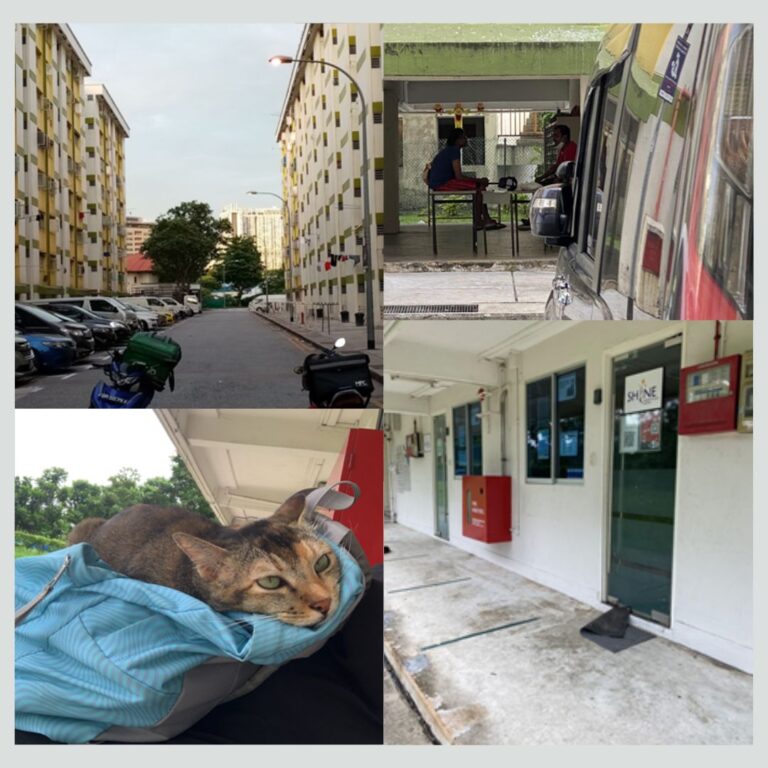Spooner Road Tales
Jerome ONG Yi Jie, College of Humanities & Sciences
Hi there! I am Jerome, an undergraduate majoring in Social Work and minoring in Community Development at the Chua Thian Poh Community Leadership Centre (CTPCLC). I took up CLC1101, Engaging & Building Communities, in my second year to explore my interest in community development. I was curious about what made community development distinct from volunteering, how it could be carried out, and what skills a practitioner would need.
As it turned out, CLC1101 was an enjoyable, beginner-friendly course that exposed my classmates and me to the theory and practice of community building. It introduced models like Asset-Based Community Development and the Sustainable Livelihoods Framework as lenses to view communities, their routines, and the spaces they inhabit. Crucially, many of these models are bottom-up and strengths-based – tapping existing resources like people-to-people interactions and community hotpots to catalyse change from within.
During the seminars, we also discussed sociocultural issues in Singapore that could be addressed by community development such as elderly isolation, income inequality, and discrimination. These discussions were lively, bringing up different perspectives on the underlying mindset and structural issues behind inequalities in Singapore as well as exposing us to vulnerable populations hidden in our midst. One discussion that stuck with me revolved around the ‘precariat’ class – a term referring to low-to-middle income workers who are at risk of financial hardship due to their low income and lack of savings. Often, these workers live in HDB flats just like most other Singaporeans, earn just enough to make ends meet but do not qualify for financial aid, making them and their families vulnerable during an economic downturn. This impressed upon me that although Singapore has designed many policies (e.g. Comlink+ Progress Packages) targeting the most financially vulnerable families, there is another group just one crisis away from poverty that requires stronger community support to upskill and access better jobs.
Beyond the seminars, we were challenged to step into the field and apply the knowledge that we learnt through a group project. In this spirit, my group mates and I chose to conduct a walkabout and mapping of assets in the Spooner Road estate, a cluster of rental flats near Jalan Bukit Merah known as a site of historical significance where an old railway station once stood.

Photos: (Top left, clockwise) Spooner Road flats, void deck spaces for interactions, SHINE Children & Youth Services, and community cats. Photography by Jerome ONG.
The experience was refreshing. Stepping into the Spooner Road estate gave me the feeling that I had chanced upon an entirely different world – one that seemed dilapidated, abandoned, and removed from the surrounding neighbourhood. Though we were met with empty flats and closed doors as many residents were not home, my team and I soon discovered that the sense of community in the area was not dead. On the contrary, it lived on through community assets like the residents, place-based activities, and the animals that roamed the area. Surprisingly, one such asset was the community cats – favourite visitors welcomed by many households. Other assets we identified included the void deck where neighbours could gather, a community garden, and a field for kids to play soccer. Finally, residents from the estate received support from social service agencies, evidenced from a transitional shelter managed by New Hope Community Services and a youth drop-in centre run by SHINE Children and Youth Services. Based on our mapping, my team and I synthesized several findings and recommendations, which we then presented to our classmates and course instructor.
Attending this course piqued my interest in community development and I chose to continue pursuing the minor programme. Since then, I have found myself being more curious and critical in examining my own neighbourhood and uncovering the stories that are weaved into it. I began stepping out of my shell more to speak with aunties and uncles, persons with disabilities, and even the cleaners and workers in my estate who hail from different countries. The more I spoke, the more I realised that there is more than meets the eye in most communities, even in a conventional HDB setting like my own backyard.
In closing, I believe that Singapore is a culturally rich country with diverse stories and possibilities but also many sensitivities along the lines of race, class, gender, and nationality that require careful management. Taking CLC1101 marked the start of my personal journey to explore some of these tensions and figure out how communities can play a part in resolving them. I hope that more youths can follow suit and expose themselves to the ideas and practice of community development, so that they can step up in small or big ways to create a fairer and more compassionate society.
